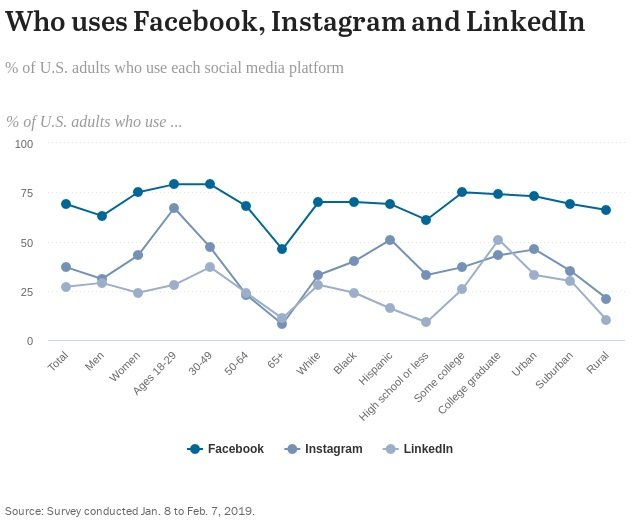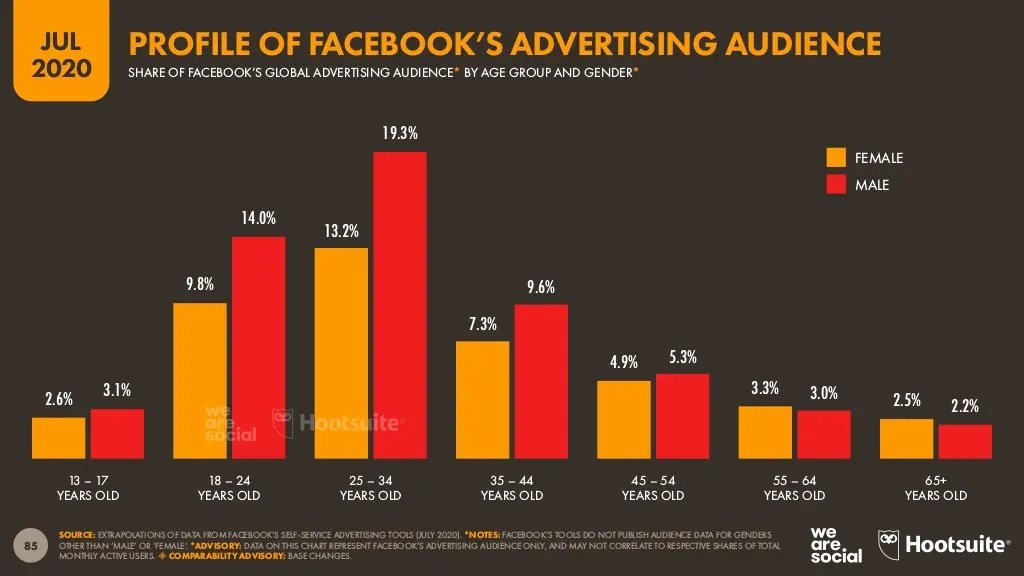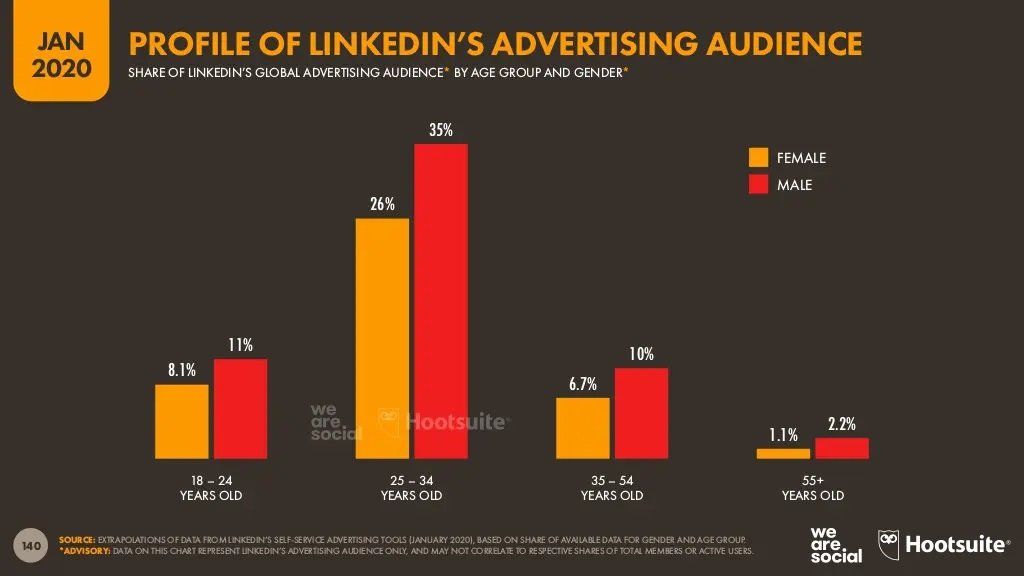Social media networks have taken the world by storm. Growing alongside the public internet itself, they’re now a multibillion-dollar global industry. It’s simply hard to imagine modern life without them. In fact, over 50% of the global population uses social media, and the average user spends at least two hours on their favorite platforms each day. This provides an unprecedented opportunity for businesses to reach larger audiences than ever before in history. Through social media advertising, companies of all scales can leverage these massive networks to engage with millions of people around the world.
What Is Social Media Advertising?
The impact that social media has had on the world is undeniable. You’ve likely experienced it firsthand for years. If you’re reading this, you probably have at least one profile, and maybe more, especially if you own a business or work in marketing.
Social media advertising is a broad topic, and it can mean different things to different people. For our purposes, it refers to paying for increased exposure on platforms like Facebook, Instagram, and LinkedIn. While these networks will always support organic (non-paid) content, the competition for attention has never been greater. This makes paid advertisements a necessity if companies wish to stand out from the crowd.
The truth is all major social media networks offer paid advertising options including YouTube, Reddit, and TikTok. However, each platform caters to distinct audiences and advertising goals. Choosing the ideal network to focus on is the first choice all businesses have to make.
Most social networks sell ads using an auction-based format. Page owners usually set either a daily budget or maximum bid for a certain result (like a click or impression). While there’s virtually no limit to how much one can spend, basic impression ads are an incredibly affordable place to start. The exact cost will be determined by the ad’s posting time and date, targeted location, quality, and campaign objective.
In general, social media advertising is about raising brand awareness, encouraging user engagement, and generating new leads. In order to be successful on these platforms, companies must clearly understand their unique goals. They must know their target audiences, learn from organic posts what performs best, start small, and scale gradually. The most successful social media advertisers test different strategies, measure their results, and optimize for greater performance over time.
Benefits of Social Media Advertising
There are many benefits of social media advertising. For one, it allows companies to interact with vast numbers of new users at little cost. It also provides a wealth of user data for marketers to analyze, from age and location to interests and level of education. Plus, most networks support flexible campaign goals, and the barrier to entry is incredibly low given social media’s potential to deliver results.
One of the most notable benefits of social media advertising is the ability to precisely reach diverse demographics within massive audiences. Major platforms collect large amounts of user data which allows marketers to target their ads to particular populations by categories like age, interest, and education. Businesses can leverage this valuable data to create calculated campaigns which accomplish specific goals.
Social media networks make it easy to test out different formats and messaging on various audiences. Unlike traditional channels like print, TV, and radio, it’s easy to determine which advertising campaigns perform better than others. Whether the ultimate goal is to cultivate leads, promote brand awareness, increase website traffic, or simply boost overall sales, many tools are available to assist you.
The best part is the fairly low barrier to entry for businesses. Countless free resources exist to educate users about the basics, and competitive ad rates allow marketers to start slowly and scale at their own pace. The accessibility and affordability of social media advertising offers a distinct advantage over conventional marketing methods, effectively leveling the playing field for small businesses and entrepreneurs.
Facebook Advertising
With nearly 3 billion active monthly users, Facebook is still the largest social media network on the internet today. Companies can create a Business Page separate from a personal profile, which is a great place to start regardless of scale or industry. We recommend that every company creates a Facebook page, if only for organic social media marketing.
Facebook offers a wide variety of paid advertising options. For instance, existing organic posts can simply be “boosted” for as little as $1 per day to increase their exposure and engagement. This is a great way for companies to share their best posts with new audiences who don’t already follow their page. We recommend boosting posts that feature upcoming events, new product launches, or candid photos showing off your unique company culture.
There are also Facebook Ads proper, which are a little more complex. They’re created via Facebook Ads Manager, and can be broken down into groups of ad sets and individual ads. Facebook Ads can feature photos, videos, groups of photos (carousels), 24-hour stories, slideshows of images, collections of products, or direct messages via Messenger.
Facebook prices ads based on four different campaign options. These are cost-per-click (CPC), cost-per-thousand-impressions (CPM), cost-per-like (CPL), and cost-per-action (CPA). Each campaign goal can be tailored for specific purposes, but the most popular choice is probably CPC. That’s because it’s a fairly inexpensive method of generating additional website traffic.
Instagram Advertising
Instagram is owned by Meta, Facebook’s parent company. It’s a relatively new player in this space, but it’s grown to accommodate about 1.5 billion active users since its launch in 2010. Instagram is a highly visual platform, ideal for companies with photogenic products and services.
Instagram is like Facebook in many ways. However, it’s most popular among younger demographics, especially Gen X, Millennials, and Gen Z. This fact is important to keep in mind when considering which social media platform best suits your target market.
Instagram is a little more restrictive when it comes to content, as it favors images and short-form videos over text. However, you can still boost organic posts for at least $1 per day to get more impressions. Instagram supports photo, video, carousel, and product collection ads, and its bidding process follows the same format as Facebook: CPC, CPM, CPL, and CPA.
LinkedIn Advertising
LinkedIn is unique among social media platforms. It launched in 2003, and it primarily functions as a professional network for companies, employees, and entrepreneurs. LinkedIn still ranks among the top 10 largest social networks with over 750 million monthly users as of 2021.
There are many ways to advertise on LinkedIn. You can easily boost an organic post to quickly expand its reach beyond current followers. You can also pay to advertise specific images, videos, or carousels to the post feeds of diverse audiences.
Like Facebook, LinkedIn allows you to send sponsored direct messages, but only to active users. It also can promote text-only advertising thumbnails to desktop users. Plus, its dynamic ads are an automated and personalized means of attracting followers and promoting articles, content, and job offers directly to users. LinkedIn’s minimum daily ad budget is $10, and it prices ads based on CPC, COM, cost-per-send (CPS), and cost-per-open (CPO).
If your company relies primarily on B2B sales, then LinkedIn is the social network for you. It can enhance your credibility, generate leads and conversions, and drive traffic to your website. While advertising on LinkedIn may be more expensive than on Facebook or Instagram, its users are much more likely to be professional decision-makers than everyday consumers.
Our Social Media Advertising Services
Social media platforms provide companies an excellent opportunity to advertise their products and services. Billions of people use these networks every day, and this trend shows no signs of slowing. That’s why we offer Facebook boosting as part of our social media management service. If you have questions about social media advertising, then please feel free to contact us today. We’d be happy to break it down in greater detail.
Originally published on August 26th, 2021
Latest Posts







